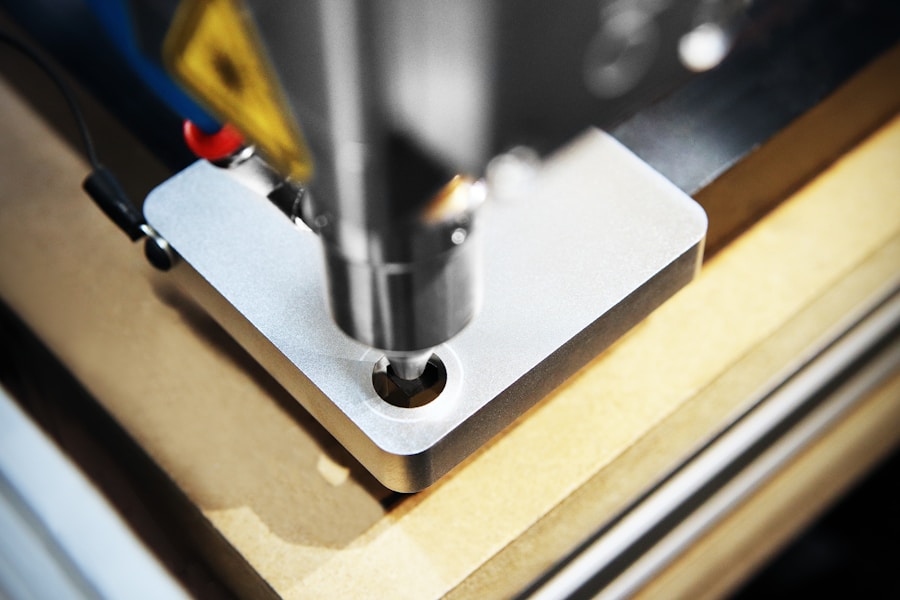Laser hair removal is a popular cosmetic procedure that uses a concentrated beam of light (laser) to remove unwanted hair. The laser targets the pigment in the hair follicles, heating them up and damaging the follicle to inhibit future hair growth. This process is effective in reducing and eventually eliminating hair growth in the treated area. Laser hair removal can be performed on various parts of the body, including the face, legs, arms, underarms, and bikini line. It is a safe and effective method for long-term hair reduction, with many people experiencing permanent hair loss after a series of treatments.
Laser hair removal is a non-invasive procedure that is performed by trained professionals in medical spas or dermatology clinics. The procedure typically requires multiple sessions to achieve the desired results, as hair grows in different cycles and the laser can only target hair in the active growth phase. The number of sessions needed varies depending on the individual’s hair type, skin color, and the area being treated. Overall, laser hair removal offers a long-term solution for unwanted hair, with minimal discomfort and downtime.
Risks of Laser Hair Removal on the Face
While laser hair removal is generally considered safe, there are some risks associated with the procedure, especially when performed on the face. One of the main risks is the potential for skin irritation and redness following treatment. This is more common in individuals with sensitive skin or those who have recently been exposed to the sun. In some cases, patients may also experience temporary changes in skin pigmentation, such as lightening or darkening of the skin in the treated area. These changes are usually temporary and will fade over time, but it is important to discuss any concerns with your provider before undergoing treatment.
Another potential risk of laser hair removal on the face is the possibility of burns or blisters. This can occur if the laser is not properly calibrated or if the skin is not adequately protected during treatment. To minimize these risks, it is important to choose a reputable provider with experience in performing laser hair removal on the face. Additionally, it is crucial to follow all pre- and post-treatment instructions provided by your provider to ensure a safe and successful outcome.
Benefits of Laser Hair Removal on the Face
Despite the potential risks, there are numerous benefits to undergoing laser hair removal on the face. One of the main advantages is the long-term reduction in unwanted facial hair. For many individuals, facial hair can be a source of embarrassment and self-consciousness, and laser hair removal offers a permanent solution to this problem. After completing a series of treatments, many patients experience a significant reduction in facial hair growth, leading to smoother, clearer skin.
In addition to reducing unwanted hair, laser hair removal can also improve the overall texture and appearance of the skin. The heat from the laser stimulates collagen production, which can help to tighten and rejuvenate the skin in the treated area. This can result in a more youthful and radiant complexion, with improved skin tone and texture. Furthermore, laser hair removal is a quick and convenient alternative to traditional methods of hair removal, such as shaving or waxing. With laser hair removal, there is no need to worry about daily maintenance or the discomfort of other hair removal methods.
Preparing for Laser Hair Removal
Before undergoing laser hair removal on the face, it is important to properly prepare for the procedure to ensure a safe and successful outcome. One of the most important steps in preparing for laser hair removal is to find a qualified and experienced provider who specializes in facial treatments. It is essential to research potential providers and schedule a consultation to discuss your goals and expectations for treatment. During the consultation, your provider will assess your skin type and hair color to determine the most appropriate laser technology for your individual needs.
In addition to finding a reputable provider, it is important to follow any pre-treatment instructions provided by your provider. This may include avoiding sun exposure and tanning beds in the weeks leading up to your treatment, as well as refraining from using certain skincare products that could increase sensitivity to the laser. It is also important to discontinue any other methods of hair removal, such as waxing or plucking, in the weeks before your laser hair removal treatment. By following these guidelines, you can help ensure that your skin is in optimal condition for treatment and minimize the risk of complications.
Aftercare and Recovery
After undergoing laser hair removal on the face, it is important to follow all post-treatment instructions provided by your provider to ensure proper healing and minimize any potential side effects. One of the most important aspects of aftercare is protecting your skin from sun exposure in the days following treatment. The skin may be more sensitive to sunlight after laser hair removal, so it is crucial to apply sunscreen with a high SPF and avoid prolonged sun exposure.
In addition to sun protection, it is important to keep the treated area clean and moisturized following laser hair removal. Your provider may recommend using gentle skincare products that are free of harsh chemicals or fragrances to avoid irritation. It is also important to avoid picking or scratching at the treated area, as this can increase the risk of infection and other complications. By following these aftercare guidelines, you can help ensure a smooth recovery and optimal results from your laser hair removal treatment.
Who is a Good Candidate for Laser Hair Removal on the Face?
Laser hair removal on the face is suitable for both men and women who are looking for a long-term solution to unwanted facial hair. Ideal candidates for this procedure have fair skin and dark hair, as the contrast between skin color and hair color makes it easier for the laser to target the pigment in the hair follicles. However, advancements in laser technology have made it possible for individuals with darker skin tones to safely undergo laser hair removal on the face.
It is important for candidates to have realistic expectations for their results and understand that multiple treatments may be necessary to achieve their desired outcome. Additionally, candidates should be in good overall health and have no active skin infections or other conditions that could interfere with healing. During a consultation with a qualified provider, candidates can discuss their goals for treatment and determine whether laser hair removal on the face is an appropriate option for them.
Alternatives to Laser Hair Removal for Facial Hair
While laser hair removal is an effective option for reducing unwanted facial hair, there are alternative methods that may be suitable for individuals who are not candidates for this procedure or prefer a different approach. One common alternative to laser hair removal is electrolysis, which involves using a fine needle to destroy individual hair follicles with an electric current. This method can be effective for permanent hair removal but may require more time and sessions compared to laser hair removal.
Another alternative for facial hair removal is traditional methods such as shaving, waxing, or using depilatory creams. While these methods offer temporary results, they may be more accessible and affordable for some individuals. However, it is important to consider the potential drawbacks of these methods, such as irritation, ingrown hairs, and the need for frequent maintenance.
In conclusion, laser hair removal on the face offers a safe and effective solution for reducing unwanted facial hair and improving skin texture. By understanding the risks and benefits of this procedure, as well as how to properly prepare for and care for your skin after treatment, you can achieve optimal results from laser hair removal on the face. If you are considering this procedure, it is important to consult with a qualified provider who can assess your individual needs and recommend the most appropriate treatment plan for you.






